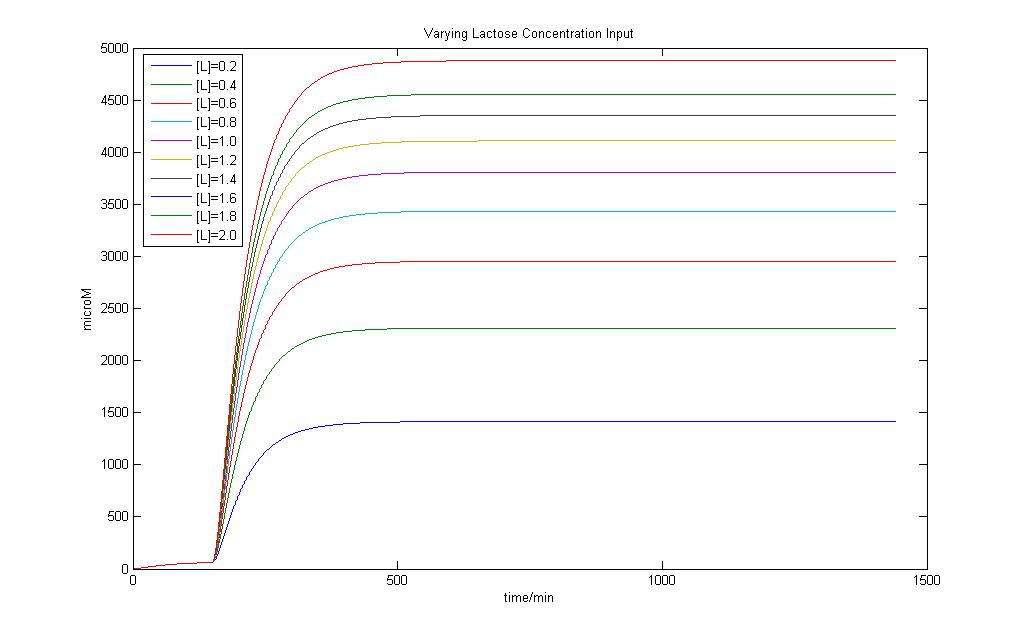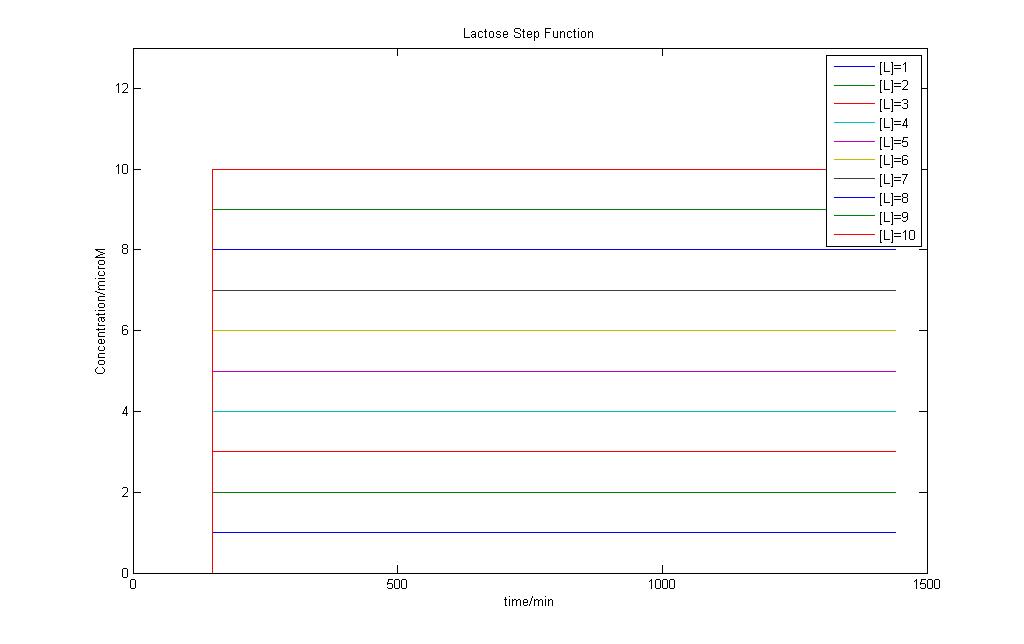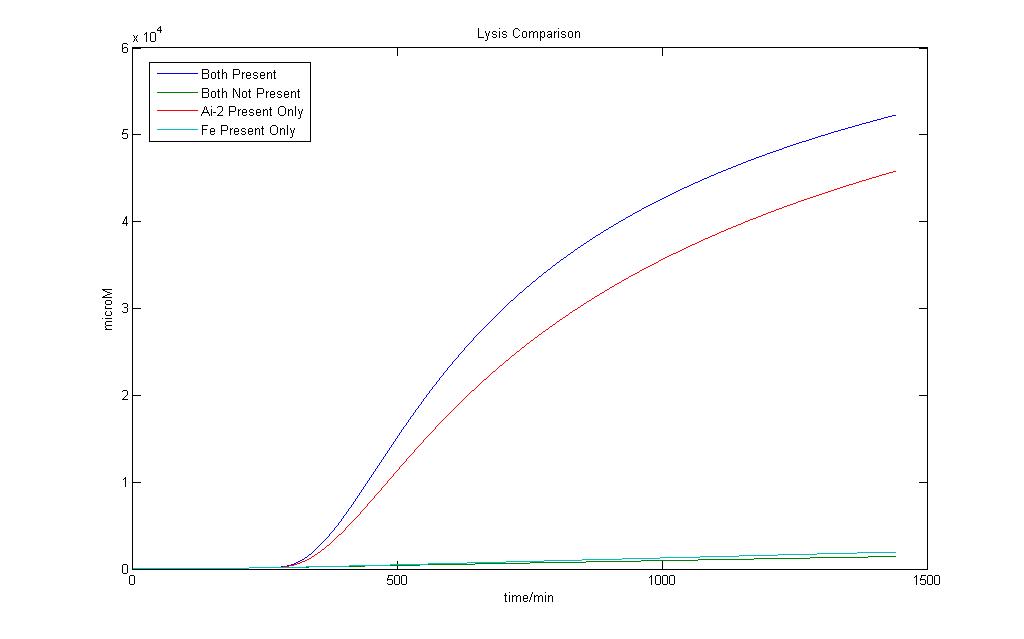Team:NTU-Singapore/Modelling/Deterministic Modeling
From 2008.igem.org
Lalala8585 (Talk | contribs) |
Lalala8585 (Talk | contribs) |
||
| Line 22: | Line 22: | ||
[[Image:Lactose Step function3.jpg|850px| Lactose Step Function]] | [[Image:Lactose Step function3.jpg|850px| Lactose Step Function]] | ||
| - | Modeling of the System shows that Lactose induction is essential to produce E7 and a variation of Lactose input can result in different yields of E7 | + | '''Analysis:''' <br> |
| + | Modeling of the System shows that Lactose induction is essential to produce E7 and a variation of Lactose input can result in different yields of E7. As seen in the figures above, the concentration of E7 produced increases exponentially until it reaches a final value without any oscillations. It is also observed that the production of E7 begins almost instantaenously upon the addition of Lactose and the system possess no momentum. | ||
==Lysis Production system== | ==Lysis Production system== | ||
Revision as of 05:28, 17 August 2008
|
Contents |
Deterministic Models
From the previous exercises on choosing suitable parameters and ODEs for our models, we have produced some simple models for our systems. The models are all generated using SIMULINK. Simulink has proven to be very useful in controlling variable inputs and it allows dynamic modeling. The user interface is friendly and easy to use.
E7 production system
The goal of this model is to predict the dynamic response of the E7 production system and to see how a change in the Lactose Input wou8ld affect the way the cell responses and the speed and shape of response.
Assumptions:
1) The cell behaves like a well-mixed vessel or reactor.
2) Lactose input into the cell is constant and well-distributed.
3) The temperature and other conditions such as fluid medium concentrations remain constant throughout the time period.
Analysis:
Modeling of the System shows that Lactose induction is essential to produce E7 and a variation of Lactose input can result in different yields of E7. As seen in the figures above, the concentration of E7 produced increases exponentially until it reaches a final value without any oscillations. It is also observed that the production of E7 begins almost instantaenously upon the addition of Lactose and the system possess no momentum.
Lysis Production system
Here we define 1 as a certain threshold e.g. (<250 µM) that when the lysis protein reaches it, lysis in the cell definitely occurs. Although we wish for an absolute AND gate, where 0 will have no lysis production at all, simulation on biological systems shows that such results are impossible. Both addition Fe ions and Ai-2 alone would induce a certain level of lysis production. However when both are available, the lysis protein production would be higher.
In the presence of Ai-2 alone, Lysis will most likely still occur albeit at a slower rate compared to situation when both Fe and Ai-2 are present.
With the addition of iron and Ai-2 together the rate of lysis production is still significantly much higher compared to Ai-2 alone.
Therefore, by giving the logical output ‘1’ as a suitable threshold value of Lysis protein production higher than that of Ai-2 induction alone, we would still be able to obtain an AND gate based on our definition.
 "
"







